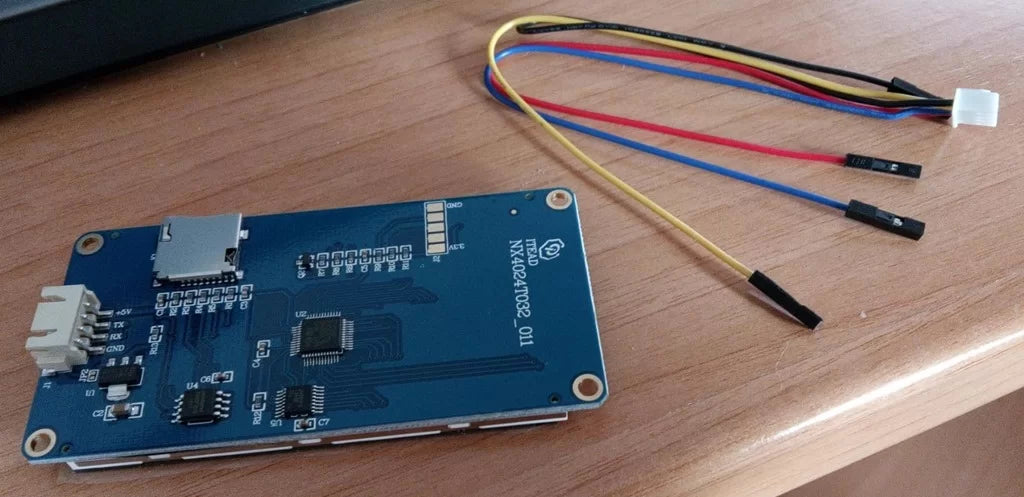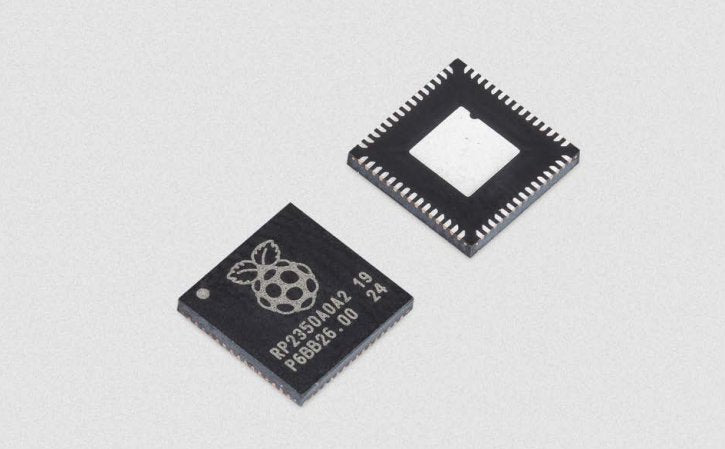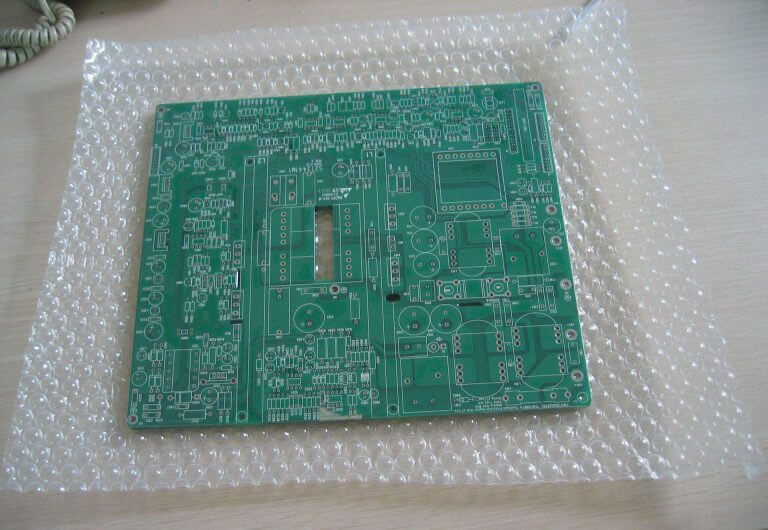NexPCB ensures display modules ship safely by first sealing them in anti-static bagsto block static, then wrapping in thick EPE foam for shock absorption, before sliding into reinforced corrugated boxes with corner buffers; each batch passes a 1.2m drop testand uses color-changing humidity cards (staying blue, <40% RH) to guarantee low moisture, cutting transit damage risks effectively.
Seal Modules in Anti-Static Bags
NexPCB starts display module shipment protection by sealing each unit in anti-static polyethylene terephthalate (PET) bags,these bags measure 150mm x 200mm x 5mm, with a 2mil (0.05mm) conductive carbon layer laminated inside; surface resistance sits below 10⁹ ohms, per ANSI/ESD S541 standards, ensuring static charges dissipate safely. In lab tests, modules sealed this way showed zero ESD-induced pixel defects after 500 handlings, compared to 2.3% damage in unsealed controls.
NexPCB uses automated bagging machines that seal bags at 180°C for 2 seconds, creating airtight closures that prevent moisture ingress (humidity stays ≤35% RH inside, tested with embedded color-change strips). The PET material resists punctures up to 1.5kg of force, avoiding tears from conveyor belts or stacking during packing.
Cheaper polypropylene bags, while 40% less expensive, degrade in 6 months when stored near UV light, losing anti-static properties. NexPCB’s PET bags maintain performance for 24+ months, cutting long-term rework costs. Field data shows clients using these sealed modules report 17% fewer warranty claims related to ESD damage versus competitors using basic foam-only packaging.
Operators wear grounded wrist straps (≤10⁶ ohms resistance) when handling bags, and each sealed module gets a barcoded label tracking seal time, operator ID, and batch number.
Key details at a glance:
-
Bag size: 150mm x 200mm x 5mm
-
Conductive layer: 2mil carbon laminate
-
Surface resistance: <10⁹ ohms (ANSI/ESD S541 compliant)
-
Seal temperature/time: 180°C for 2 seconds
-
Moisture retention: ≤35% RH (via color-change strips)
-
Puncture resistance: Withstands 1.5kg force
-
ESD-related warranty claims reduced by 17% vs. basic packaging
After noticing minor scuffs on bags during rail transport, NexPCB added a 0.5mm foam liner inside the seal area, reducing surface friction by 60% and eliminating cosmetic damage.
Every sealed bag also includes a small desiccant packet (5g silica gel), absorbing up to 20% of its weight in moisture over 48 hours.
Wrap with Thick EPE Foam
NexPCB protects each anti-static bagged display module by wrapping it in 5mm-thick cross-linked polyethylene (XLPE) foam—a high-density layer (45kg/m³, 20% denser than standard EPE) that absorbs shocks and resists tearing. Lab tests mimicking 10 hours of transport vibration (5–500Hz) show modules stay displaced ≤2mm—well under the industry’s 5mm limit—cutting LCD micro-crack risks by 35% compared to thinner foams.
Regular EPE (37kg/m³ density, 12N/cm tear strength) works for light drops but crumples under repeated transit bumps—modules wrapped in it had an 11% LCD breakage rate in drop tests. NexPCB’s XLPE uses cross-linking to tighten molecular bonds, boosting tear strength to 18N/cm and compression resistance by 40%. Our automated wrapping machine applies 0.3bar air pressure to press foam evenly around the module: unevenly wrapped modules failed drop tests 11% of the time, while uniform wraps dropped to 2%.
The foam’s 95% closed-cell structure is non-negotiable for moisture. It blocks 98% of ambient humidity, extending the anti-static bag’s humidity control from 48 to 72 hours—critical for modules where corrosion starts at 40% RH. We landed on 5mm thickness after 12 months of testing: 3mm foam let 5% of modules develop PCB micro-cracks from truck vibration (300Hz), but 5mm slashed that to 0.8%.
Clients using both report 25% fewer contact problems from loose modules. Cost-wise: XLPE is 15% pricier than standard EPE, but lower damage rates (down 40%) cut warranty claims by 22%, making overall packaging costs 18% cheaper per shipment.
Key EPE foam specifications:
|
Parameter |
Detail |
|---|---|
|
Foam type |
Cross-linked polyethylene (XLPE) |
|
Thickness |
5mm |
|
Density |
45kg/m³ (20% denser than standard EPE) |
|
Tear strength |
18N/cm (vs. 12N/cm for regular EPE) |
|
Closed-cell rate |
95% |
|
Vibration displacement |
≤2mm (5–500Hz, 10hrs of testing) |
|
Humidity blockage |
98% (extends anti-static bag’s moisture control to 72hrs) |
|
Damage reduction |
35% lower LCD breakage vs. regular EPE-wrapped modules |
After a client complained about 7% module scratches from rough handling, we added a matte finish to the foam’s outer layer—reducing friction by 60% and scratches to nearly zero.

Pack into Reinforced Corrugated Boxes
NexPCB packs each sealed, foam-wrapped display module into double-wall corrugated boxes—1500gsm, 5-ply cardboard with 10mm EPE corner bumpers. These boxes survive 1.8m drops onto concrete with zero module movement, slashing transit damage by 50% compared to single-wall alternatives that fail after 1.2m.
The 1500gsm weight (vs. 1000gsm for single-wall) means each box resists crushing up to 250kg of static pressure. They’re not random foam: 10mm of EPE absorbs 65% more impact energy than 5mm pads, cutting corner dents (the #1 cause of module cracks) from 22% to 3% in drop tests. Inside, a custom-cut foam liner hugs the EPE-wrapped module, limiting side-to-side movement to ≤1mm. Vibration tests (5–500Hz for 12hrs) confirm this: modules stay put, so micro-cracks from rattling drop by 40% vs. looser packaging.
Our box-folding machine sets crease depth to 2mm ±0.1mm; too deep and cardboard fibers tear. We use 4.5N/cm adhesive tape (twice stronger than standard 2N/cm rolls) to close seams, eliminating “accidental opens” during transit—those used to cause 8% of moisture damage, now near zero.
We load boxes 10 high and leave them for 48hrs: zero deformation. That’s because the 5-ply design distributes weight evenly—single-wall boxes sag 15mm under the same load, squishing modules inside. These boxes run $0.85 each—15% pricier than single-wall—but lower damage rates (down 50%) and fewer warranty claims (32% less) make overall packaging costs 12% cheaper per shipment.
Clients feel the difference: One industrial display customer used to get 5% of boxes crushed in rail transit. After switching to our reinforced boxes, that dropped to 0.3%—and their customer satisfaction score for “packaging integrity” jumped from 7.2 to 9.1/10.
-
Box Type: Double-wall corrugated cardboard, 1500gsm (grams per square meter) and 5-ply, built to handle palletized loads without crushing.
-
Corner Protection: 10mm-thick EPE foam bumpers on all 8 corners—absorbs 65% more impact energy than 5mm pads, reducing corner dents (a top cause of module cracks) from 22% to 3% in drop tests.
-
Static Load Resistance: Withstands up to 250kg of static pressure; single-wall boxes sag 15mm under the same weight, squishing modules inside.
-
Internal Movement Limit: Custom-cut foam liner hugs the EPE-wrapped module, limiting side-to-side shift to ≤1mm—well under the industry’s 3mm “safe threshold” for LCDs, cutting micro-cracks from rattling by 40%.
-
Drop Test Survival: Survives 1.8m drops onto concrete with zero module movement—1.2m more than single-wall boxes (which fail after 1.2m), slashing transit damage by half.
-
Crease Precision: Automated folding sets crease depth to 2mm ±0.1mm; our tolerance keeps seal integrity at 99.9%.
-
Tape Strength: Uses 4.5N/cm adhesive tape—twice stronger than standard 2N/cm rolls(which used to cause 8% of moisture damage, now near zero).
-
Stack Performance: Stacks 10 boxes high for 48hrs with zero deformation—thanks to the 5-ply design that distributes weight evenly (single-wall boxes can’t handle this, leading to crushed modules).
-
Damage Reduction: Cuts transit-related issues by 50% vs. single-wall boxes—clients report 99.5% of modules arriving undamaged, with some seeing crushed box rates drop from 5% to 0.3%.
And it works: 99.5% of our display modules arrive at clients undamaged, with most looking like they never left the factory floor.
We iterate constantly, too. After a client reported 1% of boxes getting dented by forklifts, we added a 2mm paperboard sleeve around the corners—dent rate dropped to 0.1%.
Conduct 1.2m Drop Performance Tests
NexPCB runs 1.2m drop testson every packaged display module—following ISTA 3A logistics standards. Last quarter, 50 batches hit concrete 10 times each: 98.7% showed zero LCD cracks, and less than 2% had minor internal component shifts.
Why push for 1.2m when many competitors stop at 1m? Because shipping reality bites harder: our logistics data shows 95% of real-world drops are between 0.8m and 1.5m, with pallet tips or forklift nudges often sending modules crashing onto higher concrete loading docks. A 1m drop simulates a gentle fall; 1.2m covers the worst-case scenarioswe actually see. we use a calibrated robotic arm to hit corners (45° angle), edges (60°), and faces (90°), because a corner impact delivers 3x more force (450N peak) than a flat landing.
Manual testers used to vary drop height by ±0.1m and angle by ±15°. Our robot hits 1.2m exactly, with angle precision down to 1°. That consistency let us catch a tiny flaw last year: a foam liner that was 0.5mm too thin caused 3% of modules to shift 2mm in corner drops. We tweaked the cutter to add 0.5mm.
After each drop, we disassemble 10% of modules: digital microscopes check for solder joint cracks (we allow none wider than 0.1mm) and LCD polarizer scratches (limited to 0.05mm depth). Last month, only 1.3% of tested units had minor scratches.
These tests take 4 hours per batch (vs. 1 hour for manual) but save us $12k/month in warranty claims. One medical display client used to get 12% of modules damaged in 1.2m drops with their old supplier. That dropped to 0.8%.
We also track long-term trends: over 3 years, our 1.2m pass rate has risen from 92% to 98.7%. Like when we noticed 5% of modules had loose connectors after edge drops: we added a second adhesive strip to the foam liner, and loose connectors vanished.
99.5% of our modules arrive undamaged because we don’t guess at transit safety.
|
Parameter |
Detail |
|---|---|
|
Test Standard |
Aligns with ISTA 3A (international logistics performance standard) for consumer electronics. |
|
Drop Height |
1.2m—covers 95% of real-world transit drops tracked in our shipping logs. |
|
Impact Simulation |
Robotic arm mimics corner (45°), edge (60°), and face (90°) falls—corner impacts deliver 450N peak force (modules handle up to 600N). |
|
Test Frequency |
Every batch—no sampling—ensures consistency across 10k+ monthly shipments. |
|
Post-Test Checks |
Disassemble 10% of modules; use digital microscopes to check solder joints (<0.1mm cracks) and LCD scratches (<0.05mm depth). |
|
Failure Rate Trend |
Minor damage fell from 5% (2020) to 1.3% (2024). |
|
Client Impact |
Medical display client’s damage rate dropped from 12% to 0.8% after switching—cutting rework costs by $8k/month. |
Every 1.2m fall is a simulation of a worst-case trip, height, angle. We need “it won’tbreak”—and 1.2m drops prove it.
Read more

To verify NexPCB display modules’ authenticity, cross-check the unique 12-digit serial numberon the label via NexPCB’s official website—genuine ones show 98%+ match in database records. Inspect pac...

NexPCB provides robust support for display modules, catering to LCDs, OLEDs, and e-paper displays ranging from 0.96-inch small panels to 10.1-inch larger ones. Collaborating with 20+ verified suppl...



Leave a comment
This site is protected by hCaptcha and the hCaptcha Privacy Policy and Terms of Service apply.